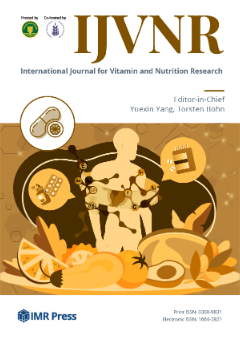International Journal for Vitamin and Nutrition Research (IJVNR) is published by IMR Press from Volume 95 Issue 1 (2025). Previous articles were published by another publisher under a hybrid publishing model, and they are hosted by IMR Press on imrpress.com as a courtesy and upon agreement with Hogrefe.
The protective association of dairy intake and the adverse impact of iron on gestational diabetes risk
Background: Gestational diabetes (GDM) is a pregnancy-related glucose intolerance with significant implications for maternal and fetal health. Calcium is essential for insulin secretion and metabolism, while iron intake may also impact GDM. This case-control study was conducted to investigate the relationship between calcium and iron intake with the risk of GDM. Methods: GDM was defined as Fasting Blood Sugar>92mg/dL or 75g Oral-Glucose-Tolerance-Test 120-minutes>153mg/dL. A 168-Item food-frequency-questionnaire was used to collect dietary calcium and iron intake from 24–40 weeks of gestation. The impact of total iron, red, processed/unprocessed meat consumption, calcium, and dairy intake on GDM were investigated. Results: A total of 229 GDM and 205 non-GDM women (18–45 years) participated. GDM group had higher pre-pregnancy weight, weight gain, and pre-pregnancy BMI. Across all models, GDM risk significantly increased in the third and fourth quartiles of iron intake. The fourth quartile had an Odds Ratio (OR) of 2.68 (CI 95%, 4.89–1.56; P<0.001) compared to the reference. Heme-iron consumption in the fourth quartiles increased GDM risk. In the second calcium intake model, ORs for the second, third, and fourth quartiles were 0.51 (CI 95%, 0.91–0.25), 0.43 (CI 95%, 0.77–0.24), and 0.35 (CI 95%, 0.63–0.19), respectively (P<0.001 all), reducing GDM risk by 50–65% compared to the first quartile. Dairy consumption in all quartiles of the first and second models was associated with lower GDM risk. Conclusions: Consumption of heme-iron through red and processed meat associated with an increased chance of developing GDM. Dairy intake reduces the chances of developing GDM in pregnant women.

